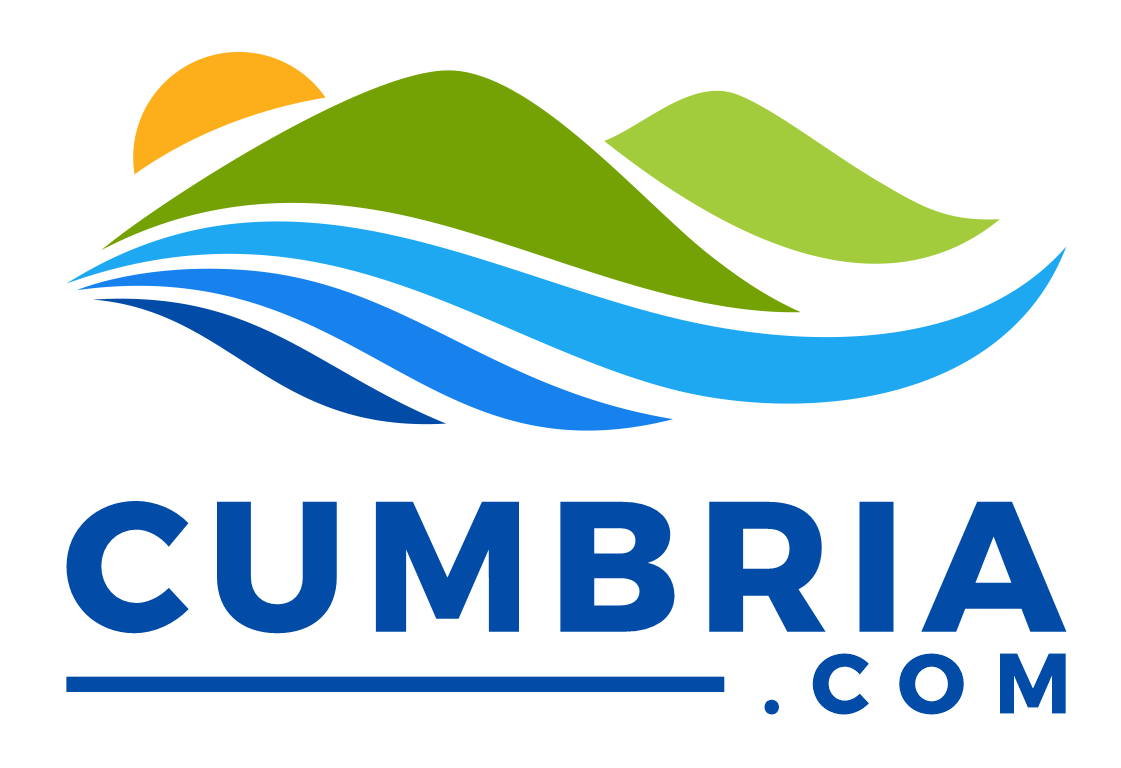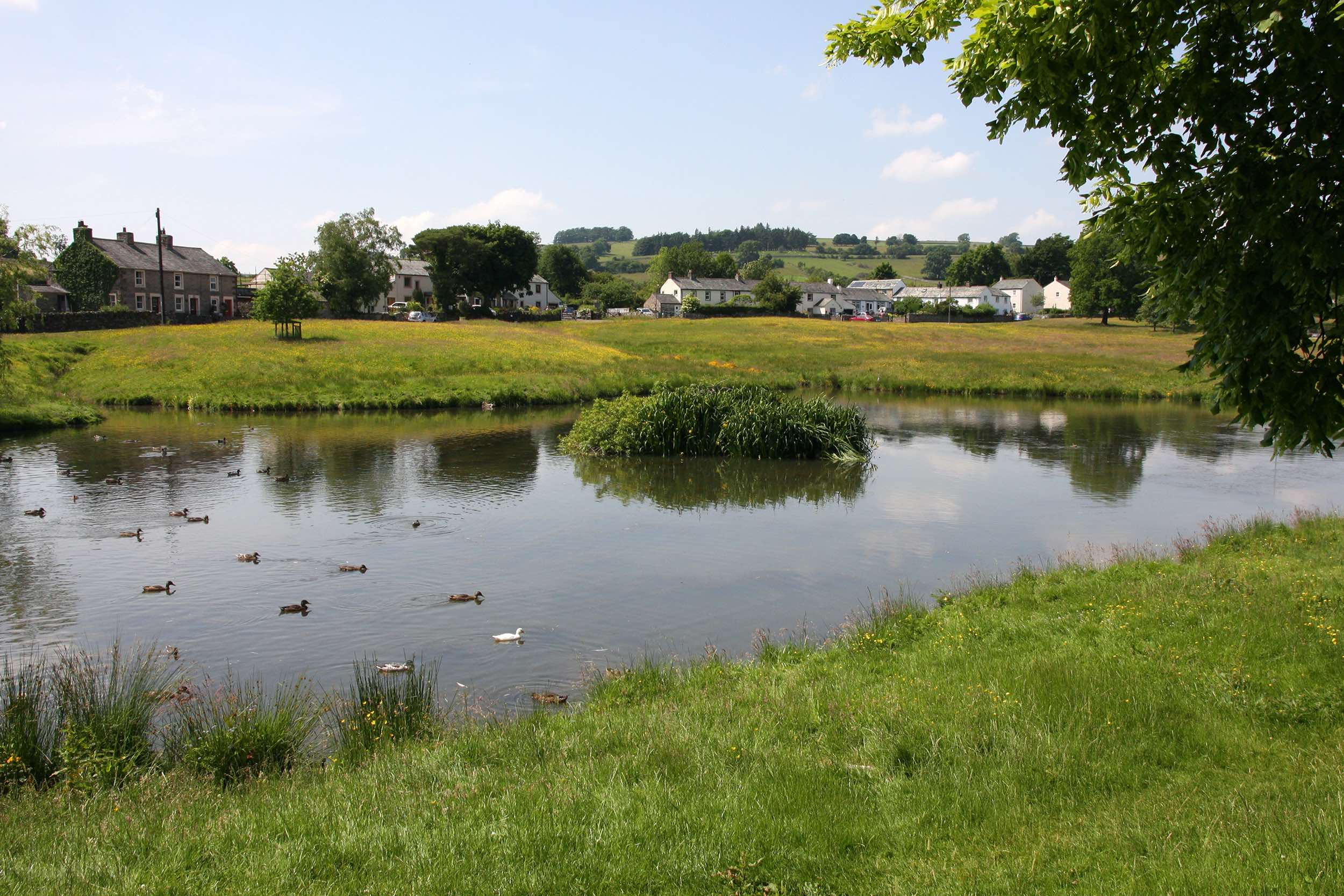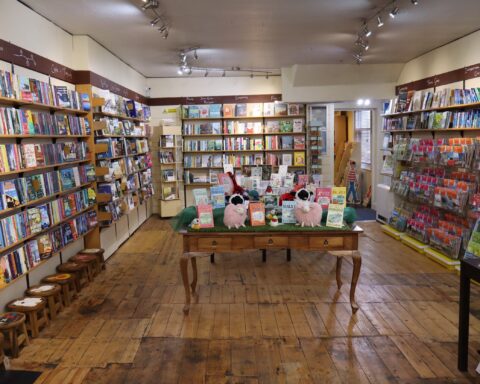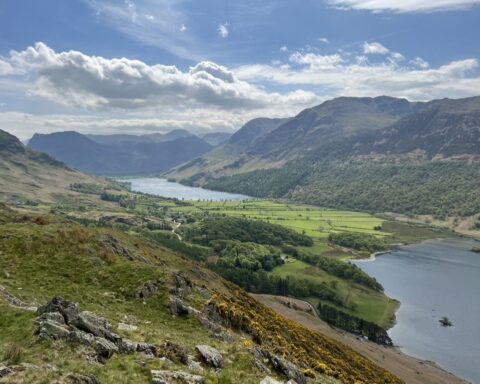The pretty settlement of Caldbeck, with its village pond, colourful cottages and crystal-clear becks, sits at the foot of the Lake District’s Northern Fells. Local families come here at weekends to feed the ducks, to indulge in lunch out or simply to enjoy a walk in the surrounding countryside; tourists visit to experience the quieter side of the National Park and to enjoy the softer, more bucolic scenery on Lakeland’s northern edge.
As you wander round the tranquil village today, it’s hard to believe it was once bustling with industrial activity. The waters of Cald Beck, rushing down off the nearby fells, powered more than a dozen mills. During the seventeenth and eighteenth centuries, these were grinding corn, creating bobbins for local textile mills, producing woollen goods, making paper… Twenty-first century visitors can still see the picturesque ruins of a bobbin mill on the western edge of Caldbeck. It’s located beside a waterfall in an impressive limestone gorge, just a ten-minute walk from the duck pond. Ask locally for directions to The Howk.
Another mill, Priest’s Mill, built in 1702 to grind corn, has been restored and now houses a café, a wool co-operative and a gift shop.
The twelfth-century St Kentigern’s Church contains the grave of Mary Robinson, the ‘Maid of Buttermere’ written about by the poet William Wordsworth and, in more recent times, local novelist Melvyn Bragg. St Kentigern’s is also the resting place of the nineteenth-century huntsman John Peel, immortalised in the song D’ye ken John Peel? St Mungo’s Well, a holy spring where early Christians were baptised, lies on the riverbank behind the church.





